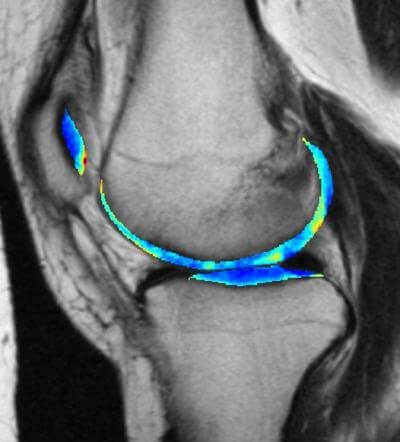PITTSBURGH — “The doctor will scan you now.” That phrase sounds pretty weird at first, but it just may become the new norm in medical offices the world over in the years and decades to come. Researchers from the University of Pittsburgh and Carnegie Mellon University have developed a new machine learning-based AI algorithm capable of detecting signs of early osteoarthritis years earlier than human doctors.
If the technology can be perfected, the study’s authors speculate it could save countless people from joint replacement surgery. If osteoarthritis is caught early enough, preventative drugs may be a more viable treatment route.
Researchers say their algorithm can pick up on subtle, abstract signs of early osteoarthritis that go unnoticed by the human eye — even the trained eye of a radiologist.

“The gold standard for diagnosing arthritis is x-ray. As the cartilage deteriorates, the space between the bones decreases,” says study co-author Dr. Kenneth Urish, associate professor of orthopaedic surgery at Pitt and associate medical director of the bone and joint center at UPMC Magee-Womens Hospital, in a release. “The problem is, when you see arthritis on x-rays, the damage has already been done. It’s much easier to prevent cartilage from falling apart than trying to get it to grow again.”
For osteoarthritis, early detection is key
Usually treated with joint replacement surgery, osteoarthritis is a very common condition among older people. In fact, knee replacement surgery is the most common surgery in the U.S. among adults over the age of 45. So, this invention could help a lot of people.
The research team examined knee MRIs originally collected by the Osteoarthritis Initiative. This program tracked thousands of people over a period of seven years to gauge the progression of knee osteoarthritis. For the purposes of this research, only a small portion of patients who showed little evidence of cartilage damage at the beginning of their tracking period were used.
All of those MRIs, along with subsequent diagnoses, were fed to the AI algorithm. According to its creators, this helped the AI program quickly learn subtle patterns that are predictive of osteoarthritis in the future.
“When doctors look at these images of the cartilage, there isn’t a pattern that jumps out to the naked eye, but that doesn’t mean there’s not a pattern there. It just means you can’t see it using conventional tools,” says lead author Dr. Shinjini Kundu.
Promising results, but still work to do
Doctors tested out the AI program by allowing it to examine a new set of patients it had never seen or studied before. This test was repeated about a dozen times.
All in all, using only MRIs that had been done three years before any symptoms appeared, the AI program correctly predicted osteoarthritis onset with 78% accuracy.
While there aren’t any drugs that prevent pre-symptom osteoarthritis from worsening right now, there are drugs that can do that for rheumatoid arthritis. So, now the research team is interested in developing similar drugs for osteoarthritis. Luckily, they believe their AI program can help with that too.
“Instead of recruiting 10,000 people and following them for 10 years, we can just enroll 50 people who we know are going to be getting osteoarthritis in two or five years,” Urish concludes. “Then we can give them the experimental drug and see whether it stops the disease from developing.”
The study is published in Proceedings of the National Academy of Sciences.
